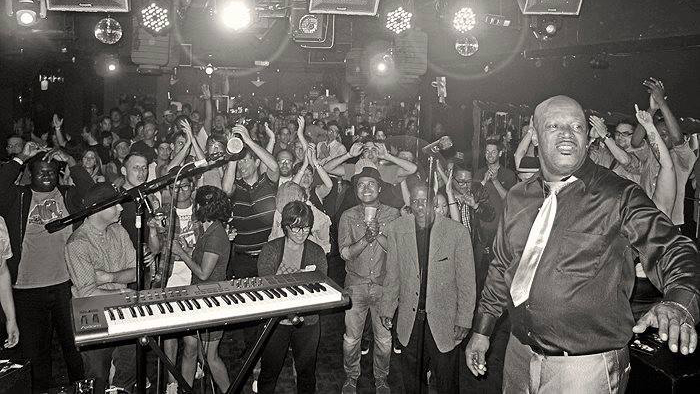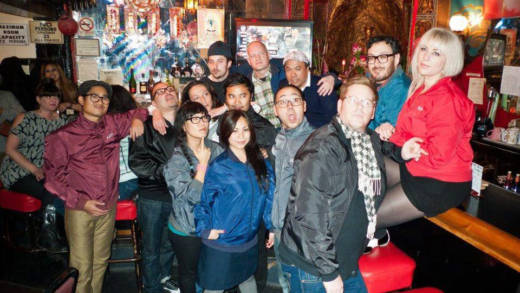While some people are content to spend Sunday nights at home, a group of San Francisco DJs have made Sunday the night to hit the dance floor. The tight but amorphous crew behind Sweater Funk digs deep into the sounds of the late ’70s and ’80s at one of the city’s most beloved parties, which will soon celebrate 10 years as the Bay Area’s premiere night for funk, disco and a rare proto–hip-hop subgenre genre called boogie.
The next party, on July 29, is Sweater Funk’s last weekly event at The Knockout before it goes on a brief hiatus. An official 10th anniversary celebration takes place at the Elbo Room on September 29, and the crew will bring back Sweater Funk as a monthly on Nov. 10, holding down second Saturdays at The Knockout.
Boogie is a subgenre of funk that might sound familiar to anyone who was listening to the radio when bands like Tavares and Slave were popular—or it might sound like disco. Yet the slower, bass-heavy boogie, which Sweater Funk popularized locally, is a direct result of the so-called “disco sucks” movement of the late ’70s, during which mostly white, male rock fans publicly rallied against the genre. Critics have since interpreted the movement as a backlash against disco fans and artists—many of whom were black and Latino, queer and female.
“Disco and uptempo R&B had to go underground again and it got cooler. It got black again, it got gay again and it got good again. It got sexier, it got funkier,” says Jacob Pena, aka DJ Guillermo, adding that Michael Jackson and Prince dabbled in boogie. “I think this is a really accessible genre; it’s positive and the lyrical content is almost always about love.”

Co-founders Jon Blunk and Pena, both former Southern California residents and longtime DJs, met at a Long Beach soul night called Good Foot and bonded over their love of obscure funk records. Both moved to the Bay Area circa 2005–2006 and, inspired by legendary Los Angles boogie party Funkmosphere, started a boogie night in the basement of Chinatown’s Li-Po Lounge in 2008.



